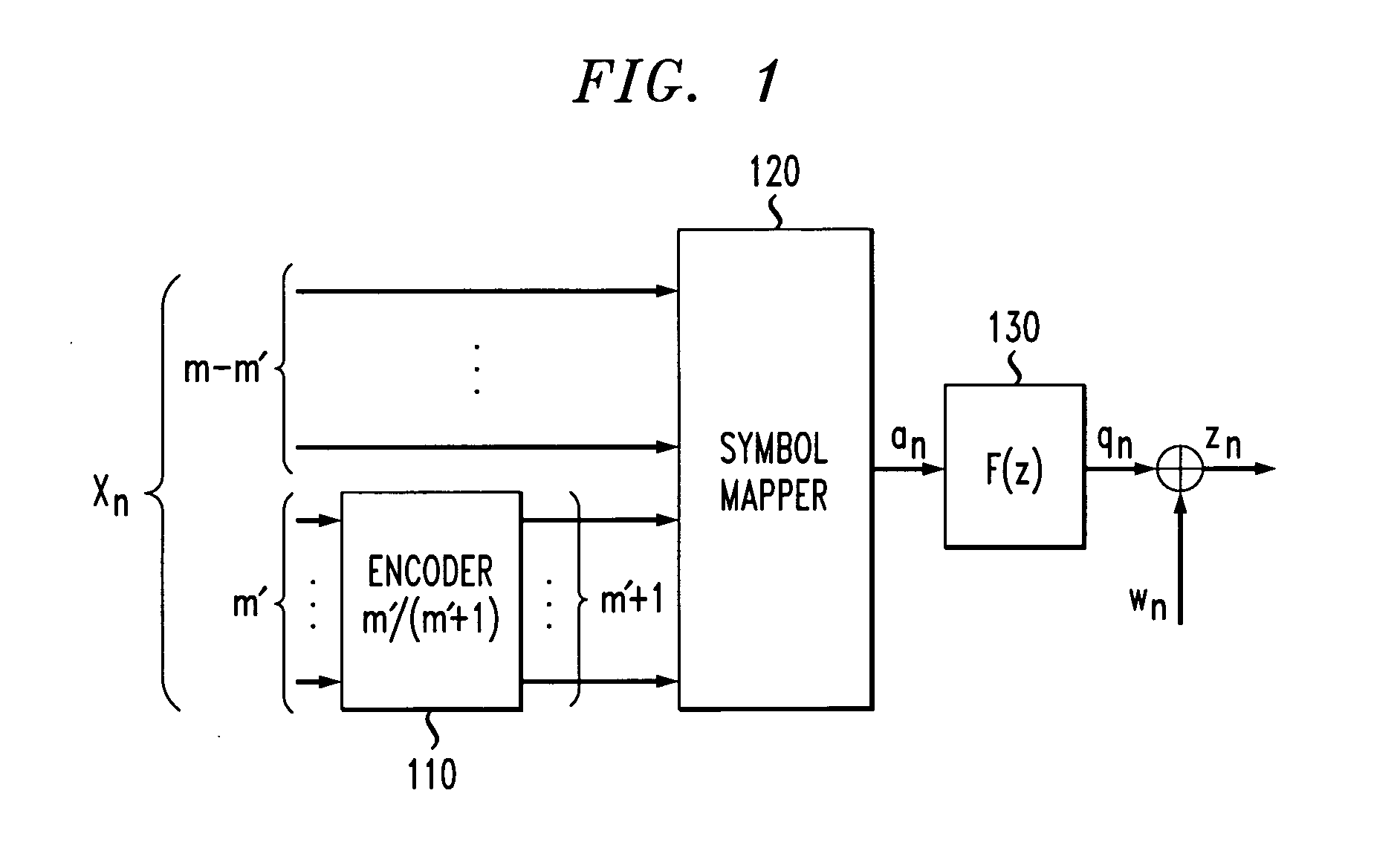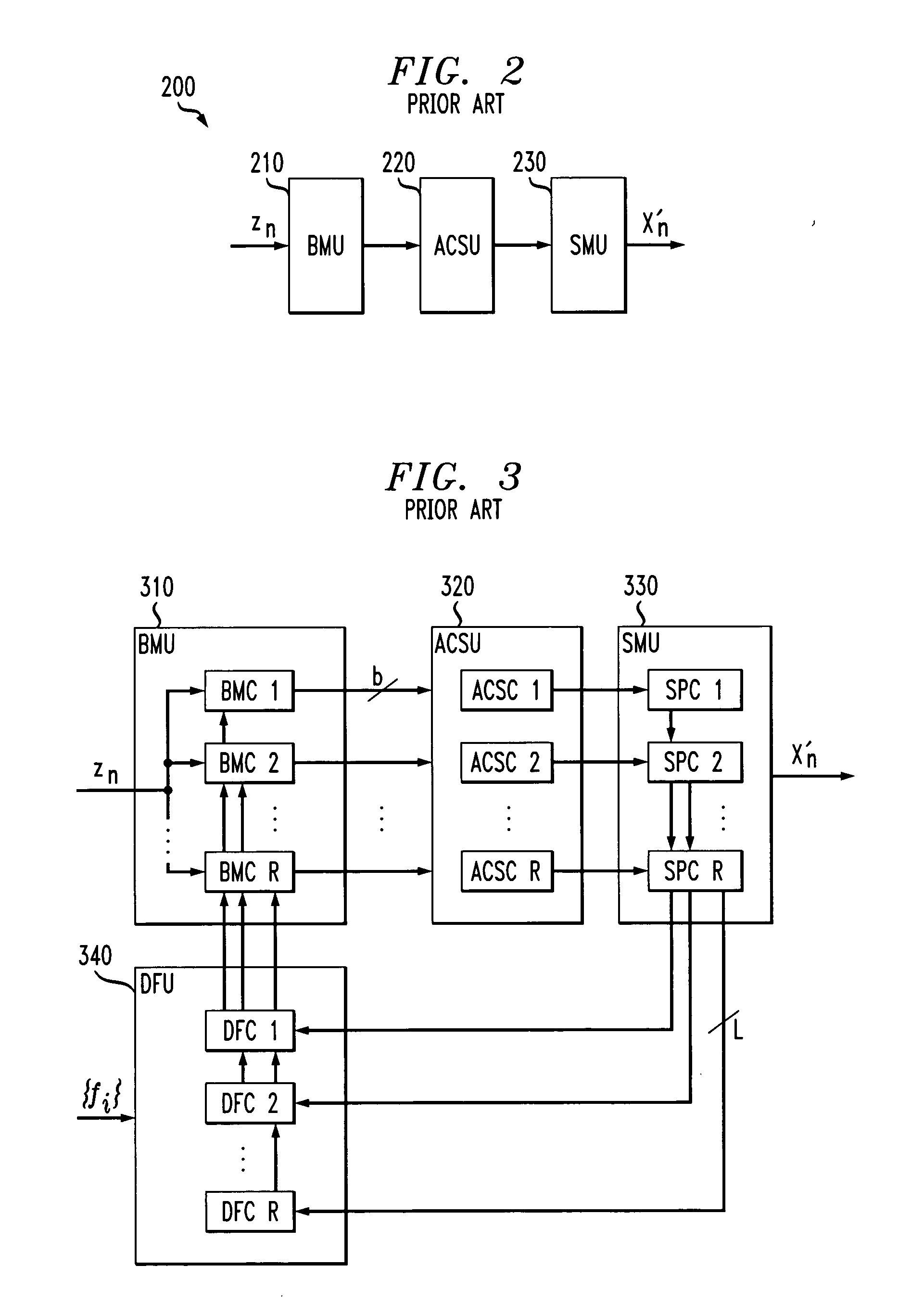Hybrid memory architecture for reduced state sequence estimation (RSSE) techniques
a memory architecture and state sequence estimation technology, applied in the field of channel equalization and decoding techniques, can solve the problems of limiting high-speed implementation factors, typical corruption of signals arriving at the receiver, and critical path associated with these feedback loops, so as to improve processing time, shorten the critical path, and reduce the complexity of sequence estimation
- Summary
- Abstract
- Description
- Claims
- Application Information
AI Technical Summary
Benefits of technology
Problems solved by technology
Method used
Image
Examples
Embodiment Construction
[0023] As previously indicated, the processing speed for reduced complexity sequence estimation techniques, such as reduced state sequence estimation, is limited by a recursive feedback loop. According to one feature of the present invention, the processing speed for such reduced state sequence estimation techniques is improved by precomputing the branch metrics in a look-ahead fashion. The precomputation of the branch metrics shortens the critical path, such that the delay is of the same order as in a traditional Viterbi decoder. According to another feature of the present invention, the computational load of the precomputations is significantly reduced for multi-dimensional trellis codes. Prefiltering can reduce the computational complexity by shortening the channel memory. The reduced state sequence estimation techniques of the present invention allow the implementation of reduced state sequence estimation for high-speed communications systems, such as the Gigabit Ethernet 1000 B...
PUM
 Login to View More
Login to View More Abstract
Description
Claims
Application Information
 Login to View More
Login to View More - R&D
- Intellectual Property
- Life Sciences
- Materials
- Tech Scout
- Unparalleled Data Quality
- Higher Quality Content
- 60% Fewer Hallucinations
Browse by: Latest US Patents, China's latest patents, Technical Efficacy Thesaurus, Application Domain, Technology Topic, Popular Technical Reports.
© 2025 PatSnap. All rights reserved.Legal|Privacy policy|Modern Slavery Act Transparency Statement|Sitemap|About US| Contact US: help@patsnap.com



